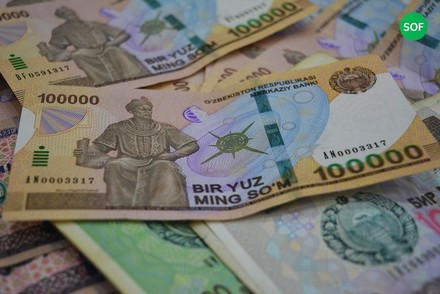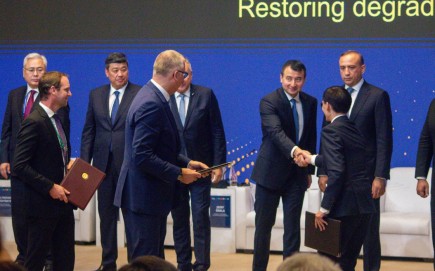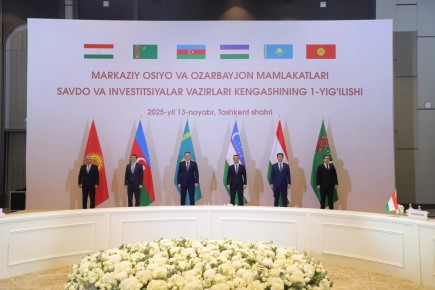In January-March 2025, the average gross wage, excluding inflation, in Uzbekistan increased by 18% year-on-year (compared to the same period in 2024) — from 4.91 million to 5.796 million soums, the National Statistics Committee said in a report.
Taking into account year-on-year inflation (10.3%), the real growth rate of wages topped 7.7%.
The growth has slowed slightly compared to previous years. For comparison: in Q1 2024, gross wages increased by 19.6% (with inflation of 7.98%), 2022 — by 20.1% (11.66%), 2021 — by 18.8% (10.45%).
In the provinces, the highest average gross wage remained in Tashkent. In annual terms, it added 22.7% (versus 22.3% in January-March 2024), increasing from 8.12 million to 9.89 million soums.
Next comes Navoi province — an increase from 6.5 million to 7.33 million soums (+12.6% versus 18.8%), Tashkent province — from 4.76 million to 5.43 million soums (+14.3% versus 15.2%), Andijan province — from 4.39 million to 4.87 million soums (+11% versus 25.2%) and Bukhara province — from 4 million to 4.76 million soums (+18.5% versus 14.7%).
Kashkadarya province was placed the last in terms of gross average wages, increasing from 3.59 million to 4.08 million soums (13.7% against 16%).
The lowest rates were also recorded in Fergana province — 4.2 million soums (+13.7%), Surkhandarya — 4.2 million soums (+19.1%), Namangan — 4.28 million soums (+16.1%), Samarkand — 4.35 million soums (+17.6%).
The gap in wages between the capital and the provinces is on the rise . In particular, the difference between the highest (Tashkent) and the lowest salary (Kashkadarya) increased from 2.26 to 2.42 times. At the end of 2022, this figure was 2.18 times, in 2021 - 2.06 times, and in 2020 - 1.97 times.
By type of activity, the highest average wages are still offered in the banking and financial and insurance sectors - they increased to 15.85 million soums over the year, although the growth rate did not change (19.8%).
The IT sector added 26.8% - to 14.8 million soums (in Q1 2024, the growth was 23.5%), transportation and storage - to 8.72 million soums (16% against 18.8%), industry - to 6.92 million soums (13.6% against 19.7%).
Trade, which has overtaken the construction sector, continues to grow in wages — 6.52 million (+15%) against 6.01 million soums (+12.3%). Over the same period last year, the growth rates in these sectors were 24.4% and 6.6%.
The lowest average monthly salary remains in the healthcare sector — an increase from 3 million to 3.63 million soums (+11.1% against 18.7%) and education — from 3.12 million to 4.04 million soums (+17.7% against 17.4%).
The growth rate of teachers' wages has accelerated, but for physicians — it has slowed down sharply. At the same time, they remain below the national average (18%), which is why the gap between wages in these sectors and the national level has increased.
In particular, if in Q1 2022 wages in education were 26.5 percentage points lower than the national level, then by the end of Q1 2024 the gap increased to 30.2 percentage points. In healthcare, the difference increased from 32 to 37.4 percentage points during this time.
Earlier in 2025 in Uzbekistan, wages of employees of budget-financed organizations, pensions and benefits are planned to be increased by a level not lower than the projected inflation rate of 7%. In 2024, less funds were allocated to increase wages and pensions than planned.












